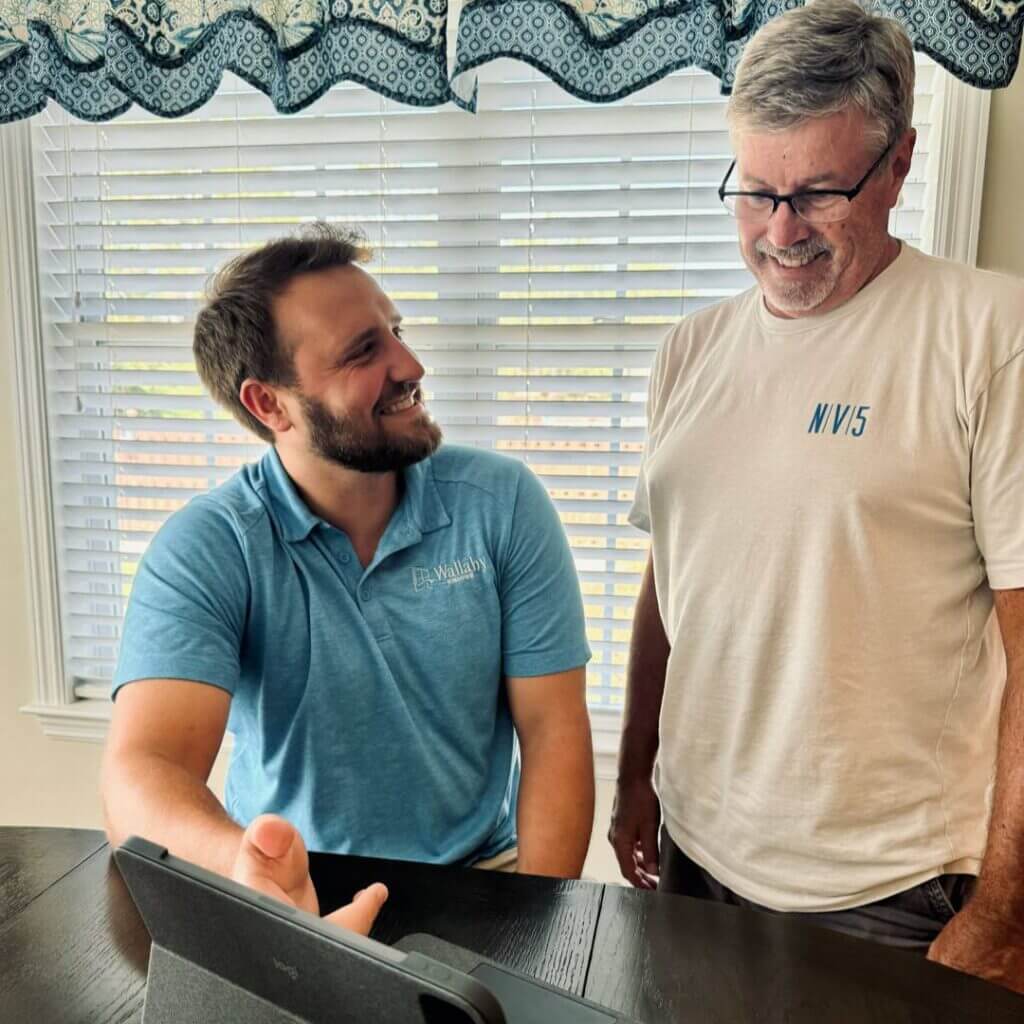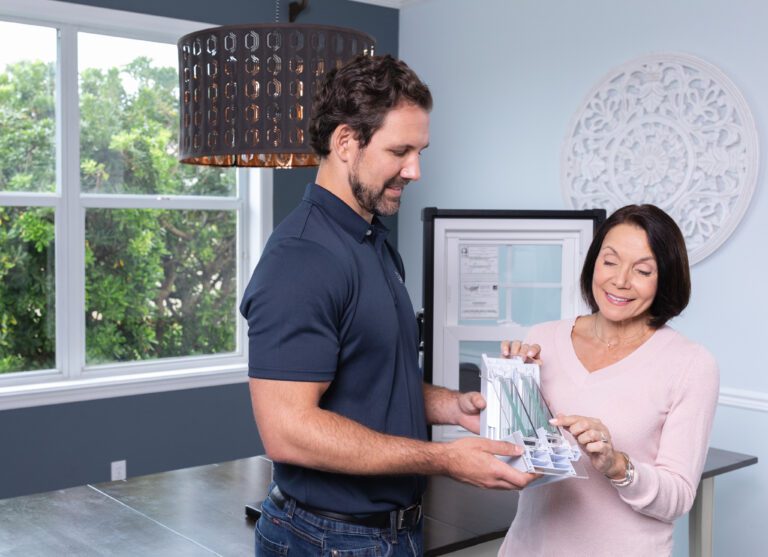When it comes to replacing siding, most homeowners focus on the exterior — choosing materials, colors, and styles that will boost curb appeal and protect their homes. But there’s a crucial component hidden beneath the surface that plays an equally important role in your home’s long-term protection and energy efficiency: house wrap.
If you’re planning a siding replacement in Denver or anywhere in Colorado, understanding what house wrap is — and why it matters — is key to making a smart, informed decision. In this blog, we’ll explain what house wrap does, the benefits it offers, and why it should be part of your siding project.
What Is House Wrap?
House wrap is a moisture and air barrier applied to the exterior walls of your home, underneath the siding. It’s typically made of synthetic materials like polyethylene or polypropylene fibers, designed to be breathable yet water-resistant.
Think of house wrap as a windbreaker jacket for your home. It shields your house from rain, snow, and wind while allowing trapped moisture to escape from inside the wall cavity. Without it, water that gets behind the siding can seep into your home’s structure — causing mold, mildew, rot, and energy loss over time.
Why House Wrap Matters in Siding Replacement
1. Moisture Protection
Denver’s climate is known for its dramatic swings — sunny one day, snowing the next. House wrap adds a critical layer of defense against wind-driven rain and snow, keeping moisture from penetrating the wood sheathing beneath your siding.
Even with high-quality siding, small gaps can allow water to sneak in. House wrap acts as a backup barrier, ensuring that moisture doesn’t reach your wall structure or insulation. This is especially important for wood-framed homes, which are susceptible to water damage and rot if not properly protected.
2. Air Barrier = Better Energy Efficiency
Air leakage is one of the biggest sources of energy loss in a home. House wrap helps reduce air infiltration, especially during Denver’s cold winters and hot, dry summers. By sealing off unwanted drafts, house wrap contributes to a tighter building envelope, allowing your heating and cooling system to work more efficiently.
In fact, some house wraps are engineered to provide measurable R-value improvements (a rating of insulation effectiveness), which can help reduce your energy bills year-round.
3. Mold and Mildew Prevention
Moisture trapped inside wall cavities can breed mold and mildew, which can be difficult and expensive to remedy once they take hold. A high-quality house wrap allows vapor to escape while preventing water from getting in, keeping your wall assembly dry and healthy.
This is especially important in Colorado, where homes may go from cold, wet snow to warm, sunny days in less than 24 hours. That rapid freeze-thaw cycle can create condensation inside your walls if they aren’t properly protected.
4. Extends the Life of Your Siding
Whether you’re installing vinyl, fiber cement, or engineered wood, siding is your home’s first line of defense — but it doesn’t do all the heavy lifting alone. By installing house wrap underneath, you extend the lifespan of your siding by minimizing water intrusion and structural stress.
In short, your siding performs better when paired with proper underlayment.
 Does Every Siding Project Require House Wrap?
Does Every Siding Project Require House Wrap?
While house wrap isn’t always legally required depending on local building codes, it is highly recommended for almost every siding replacement project — especially in areas like Denver where weather extremes are common.
In many cases, Denver building codes require some form of water-resistant barrier beneath the siding. Professional installers typically include house wrap in full siding replacements to ensure the entire wall system is up to code and protected for the long term.
Types of House Wrap
Not all house wraps are created equal. Some of the most common types include:
- Spun-bonded Polyolefin (e.g., Tyvek®) – The most widely used option. It’s breathable and water-resistant, ideal for most climates.
- Woven Polyethylene or Polypropylene – Often stronger and more tear-resistant, these wraps are good for high-wind areas.
- Drainable House Wrap – Features grooves or textures that actively direct water down and away from the wall.
- Liquid-Applied WRBs (Weather-Resistive Barriers) – Sprayed or rolled on, these are often used in custom home applications or advanced building systems.
Your siding contractor can help determine the best type of house wrap for your home based on the siding material, local weather patterns, and budget.
What Happens If You Skip the House Wrap?
Skipping house wrap might save a little money upfront, but it can lead to expensive repairs down the line. Without this protective barrier:
- Moisture can build up behind your siding
- Air drafts can raise your energy bills
- Mold and mildew can grow inside your walls
- Your siding’s lifespan can be dramatically shortened
Especially in a place like Denver, where weather conditions can change overnight, house wrap acts as insurance against moisture damage and energy loss.
House Wrap and Insulation: A Powerful Combo
House wrap alone doesn’t insulate your home, but when combined with insulated siding or exterior rigid foam, it becomes part of a comprehensive thermal barrier. If you’re planning to upgrade your siding, it’s the perfect opportunity to add insulation, seal air leaks, and improve your home’s overall efficiency in one go.
This is particularly valuable for older Denver homes, many of which were built before modern insulation and moisture barrier standards were common.
Professional Installation Matters
Just like siding, house wrap only works if it’s installed correctly. Gaps, tears, or poor overlap can render it ineffective. That’s why it’s important to work with a trusted siding contractor who:
- Uses high-quality wrap materials
- Installs them with proper overlap, taping, and sealing
- Ensures full coverage behind all corners, windows, and doors
- Understand Denver building codes and weather conditions
At Wallaby Windows Denver, we treat house wrap as a critical step in the siding installation process — not an afterthought.
House Wrap Is the Hidden Hero of Siding Replacement
While you may not see it once the project is done, house wrap plays a vital role in protecting your home, lowering energy bills, and extending the life of your siding. Especially in a place like Denver — where snow, sun, and wind all leave their mark — house wrap is essential to building a durable, weather-ready home exterior.
If you’re planning a siding replacement, don’t overlook what’s underneath. Ask your contractor about house wrap and make sure it’s part of your project plan.
At Wallaby Windows Denver, we include house wrap in every full siding replacement because we know it makes all the difference. Ready to protect your home from the inside out? Book your free in-home consultation today, and let’s build something that lasts.



